The views expressed in our content reflect individual perspectives and do not represent the authoritative views of the Baha'i Faith.
This past summer, in the wake of the brutal shooting of Jacob Blake, an unarmed black man shot seven times in the back by police as he entered his vehicle where his three small children were seated, I found myself experiencing a profound physical reaction to an all too familiar iteration of racial violence imposed upon the black body. For several days, I could not eat or sleep consistently. I was gripped by a debilitating fear that kept me inside as the hyper anxiety I felt threatened to consume me.
RELATED: Why Black People Need Safe Spaces to Heal
Shocked as I was by the horrific nature of the shooting — the dual tragedy of seven bullets forcing their way into Mr. Blake’s slumping body, ultimately paralyzing him, and the punctured innocence of children realizing for the first time that their father was not faster than a speeding bullet or more powerful than a locomotive — I was also surprised by my reaction.
You see, this reality was not new for me. As I watched the video recording, I thought of the vicious beating of Rodney King in 1991; the savage assault by the New York Police Department of a Haitian immigrant named Abner Louima in 1997; the brutal slaying of Amadou Diallo in 1999, shot multiple times by plainclothes officers who mistook him for a rape suspect; the senseless shooting of Prince Carmen Jones in 2000, and the names of so many others: Nelson Martinez Mendez, Kendra Sarah James, Sean Bell, Oscar Grant, Philando Castile, Walter Scott, Breonna Taylor, Tamir Rice, Michael Brown, Eric Garner, George Floyd, and Ahmaud Arbery.
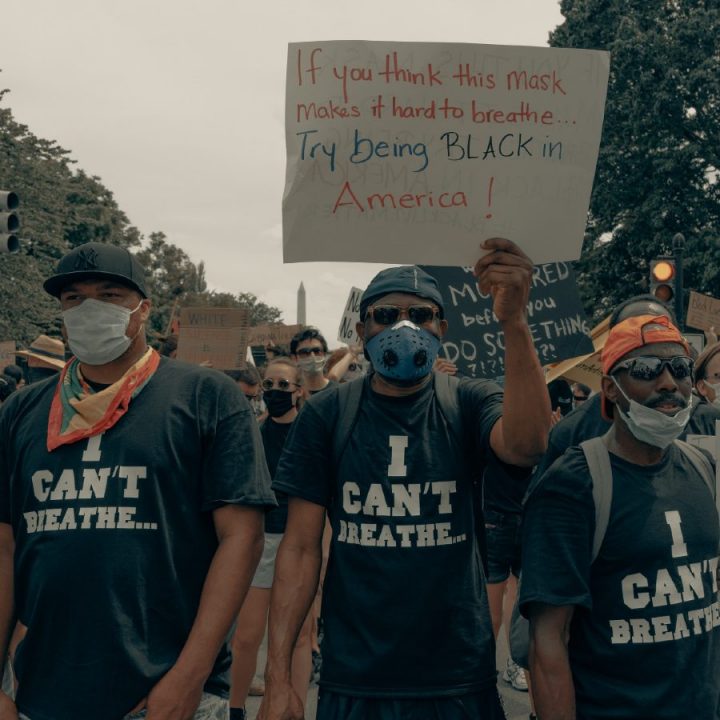
Their names are a processional of Black bodies feeding the pyres of America’s racial furnace. I was painfully familiar with these names —an absurd normality of African American life — as the powerful essayist and novelist Ta-Nehisi Coates hauntingly wrote in “Between the World and Me”: “This is common for black people.”
But, the shooting of Jacob Blake was different somehow. It shook something in me.
Perhaps it was the chemistry, a violent mix of the unadulterated water of youth with the impurities of objectification and nullification that so affected me. My mind and spirit could find no rest. Even the comfort of prayer — so central to the survival of Black people during our treacherous walk through the darkened forest that is America — seemed incapable of lifting me out of the breach I had fallen into. When I shared my anguish in confidence with a white friend, the response was, “Why is this shooting any different than all of the others?”
An odd question, I thought — one that indicated a remote and banal orientation towards racial violence that felt aloof and privileged. But for me, it was different. My complexion imposed a proximity to racial brutality that I could neither physically nor mentally distance myself from. And truth be told, the reality of the oneness of humanity, the primary purpose of the Baha’i revelation, dissolves the fictive borders of race or color to reveal an essential interconnectedness that links us all. The suffering of one is the suffering of us all.
As Abdu’l-Baha, the son and designated successor of Baha’u’llah, the prophet and founder of the Baha’i Faith, explained a century ago:
This limitless universe is like the human body, all the members of which are connected and linked with one another with the greatest strength. How much the organs, the members and the parts of the body of man are intermingled and connected for mutual aid and help, and how much they influence one another! In the same way, the parts of this infinite universe have their members and elements connected with one another, and influence one another spiritually and materially.
I was twice bound to Mr. Blake’s shooting. We shared a heritage of racial trauma, and we were also even more deeply connected by the boundless, transcendent nature of the human spirit. Because of this, although the crowded line leading to the consuming fire was ever-expanding with fresh bodies — those sable martyrs — each represented something more than sacrificial timber to me. Each was a promise; a constellation of possibilities; a universe of clustering planets orbiting around one another — a father, a mother, a son, a daughter, a brother, a sister, a husband, a wife — lost now and forever. These are losses that a blind, confused and bewildered nation can ill afford, particularly when we are so in need of the clarifying vision which, according to the Baha’i writings, is the spiritual endowment of people of African descent:
O thou who art pure in heart, sanctified in spirit, peerless in character, beauteous in face!….Thou art like unto the pupil of the eye which is dark in colour, yet it is the fount of light and the revealer of the contingent world.
In a very real sense, each time one of these lives, judged to be expendable, is discarded, some of the light that would illuminate our path forward is dimmed. But, the careless disregard and benign neglect of Black life is not an innovation of the 21st century. The grotesque socialization that allows us to ask with blinding ignorance, “Why is this killing any different than all the others,” has its roots in popular culture and perverse iterations of race-based medical science — which gave birth to the enduring myth that African Americans are biologically predisposed to resist pain and injury.
An enduring racist trope of American popular culture is the so-called “magical Negro” — a term attributed to the film director Spike Lee. Historically it’s a supporting character in narrative fiction and films who possesses some ‘mystical’ ability, exclusively in service to the white protagonist. These characters, typically flatly constructed and without complexity, exhibit a humble, sage-like posture and a willingness to sacrifice themselves for the dominant white characters who exhibit little or no determination to improve the racist social conditions that frame the lives of their “magical friends.”’
Examples of this include films such as “The Legend of Bagger Vance” and “The Green Mile,” in which the character John Coffey, a gentle, Christ-like figure played by the late actor Michael Clarke Duncan, is endowed with an ability to “draw out” the pain and suffering of others. Coffey’s sole purpose in the film is to literally take in the sicknesses and discontents of the white protagonists, who cannot bear the burdens laid upon them — but no worries, he can. His imposing physicality, belied by his compliant, gentle nature, makes him the perfect receptacle to contain their illnesses and death. Coffey’s humanity is rendered only in relation to the white community he serves, a 20th century iteration of the faithful, docile house slave. The film makes no room for his story or the personal pain and trauma he carries as a Black man living in America. It is erased, as Mr. Blake’s humanity was erased by seven bullets fired from a police revolver.
In 19th century America, medical researchers promoted a series of fantastical theories about the biology of African Americans that served as a justification for slavery and the dehumanization of Black life. These fantastical suppositions, developed in the mid 1800’s, include the belief that Black people have a thicker epidermis than whites, indicating a higher threshold for pain. Lies, such as that the skulls of white people are larger on average, resulting in greater intelligence —or that the blood of African Americans coagulates at a quicker pace than white people — are widely held beliefs among many white medical students. A 2016 study by the National Academy of Sciences found that nearly half of those sampled endorsed these theories.
RELATED: Medical Racism: How Prejudice Keeps People From Getting Help
These beliefs have powerful implications for how pain, experienced among African American populations, is perceived and treated with less consideration given to managing that pain than that of their white counterparts — because “we can take it.” An emblematic example of this is the disproportionate rate at which Black women die in childbirth and/or give birth to stillborn infants— a condition known as “weathering,” a theory that suggests that racism undermines the reproductive health of Black women. Multiple studies have found that the pain experienced by African American women in childbirth is routinely ignored or diminished resulting in significantly higher rates of infant mortality than White women.
The association of invincibility with the Black body gives rise to the carelessness and dismissiveness that sometimes characterizes our private and public response to the destructive impact of systemic injustice on communities of color. If Black people are possessed of some innate capacity to endure more than our white brothers and sisters then that endowment divests racism of some of it’s devastating consequences, blunting our collective sense of shock and horror at the daily injustices faced by marginalized communities and ultimately diminishing our sense of urgency to actively participate in constructive responses to the enduring scourge of white supremacy.
In 1972, the Universal House of Justice, the supreme governing body of the Baha’i world community, wrote a clear reminder — one I hold myself accountable to — about the responsibility of Baha’is to work for the cause of race unity:
Baha’u’llah tells us that prejudice in its various forms destroys the edifice of humanity. We are adjured by the Divine Messenger to eliminate all forms of prejudice from our lives. Our outer lives must show forth our beliefs. The world must see that, regardless of each passing whim or current fashion of the generality of mankind, the Bahá’í lives his life according to the tenets of his Faith. We must not allow the fear of rejection by our friends and neighbors to deter us from our goal: to live the Bahá’í life. Let us strive to blot out from our lives every last trace of prejudice — racial, religious, political, economic, national, tribal, class, cultural, and that which is based on differences of education or age.
I am particularly vigilant about this because, in a cruel twist of fate, African Americans have developed a mythic self perception of invulnerability as an internal act of defiant resistance in response to the existential threats which complicate our daily lives. We have forged an internal protective armor as a psychic defense meant to repel the wounding arrows of racial hatred.
In this defensive posture any expression of pain or weakness is incompatible with the projection of unassailable “strength” meant to preserve our dignity and self respect. In an effort to withstand any perceived threat to our humanity, Black people will sometimes affect an appearance of “hardness” as a non-verbal warning to anyone who would attempt to undermine our humanity. Ignorance about the genesis of this pattern of behavior has led to the creation of the racist tropes of the “angry Black woman” and “violent Black man” a cruel expression of racial labeling meant to shame African Americans for their justifiable anger.
RELATED: “Are You Angry?” What I Get Asked As a Black Man
Given the brutal history of racism in America, which was predicated on sustained disrespect rooted in the persistent dehumanization of Black people, the construction of an “edifice of safety” built on a foundation of public fear surrounding the Black body, is a rational response to sustained trauma —an example of a people divested of the traditional levers of power making use of what they have to survive. But the mental and physical tax required to continuously reinforce that defensive wall is high. The prevalence of hypertension, heart disease, and diabetes within the African American community is devastating evidence of the price of emotional fragmentation where the full spectrum of one’s humanity cannot be fully represented, because in America, it could mean your death. It is an unjust burden for any of us to carry, one that is ultimately unsustainable and often self destructive.
In the 1930s, Shoghi Effendi, the Guardian of the Baha’i Faith, wrote in “The World Order of Bahá’u’lláh” that “They whose hearts have been warmed by the energizing influence of God’s creative love, cherish His creatures for His sake, and recognize in every human face, a sign of His reflective glory.”
Ultimately, it is only when we have done the work, individually and collectively, to eradicate the blight of racism that both the external and internal walls we have erected will finally be dismantled. On that great day, we will bury the racist theories and mythologies that codify the treatment of our marginalized communities. On that day, we will cast off the veils of ignorance and see with astonishing clarity, that all life is illumined by the same light and all humanity is set aglow by the same divine fire.


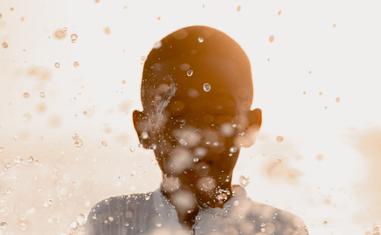

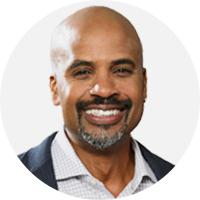
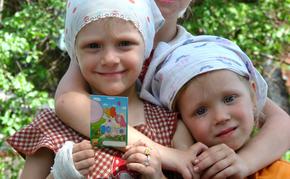
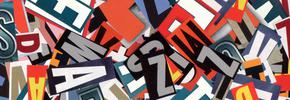
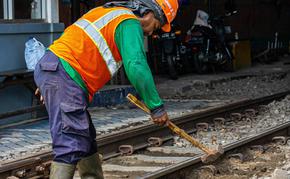









Comments
Sign in or create an account
Continue with Facebookor